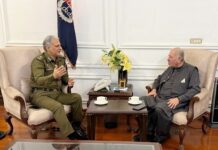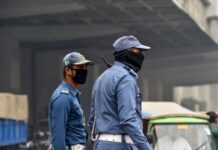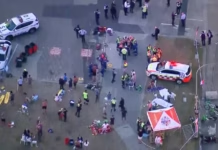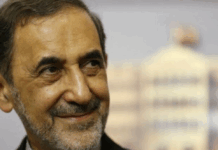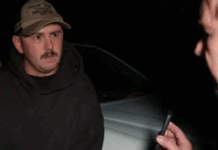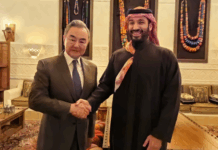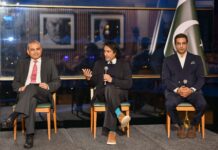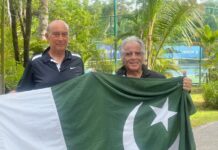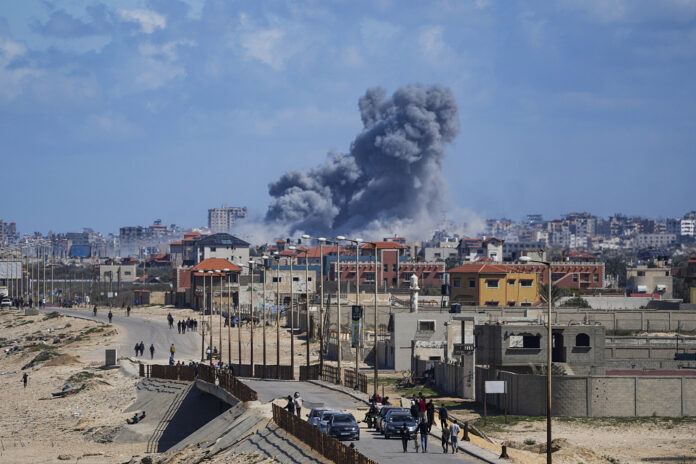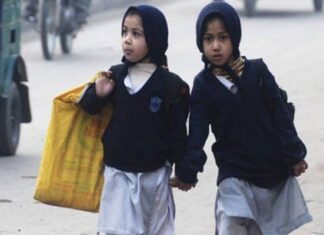CAIRO/ JERUSALEM: Israeli warplanes pounded the northern Gaza strip for a second day on Wednesday in a fierce assault that has shattered weeks of comparative calm, and Israel said it was moving forward with plans for an all-out assault on Rafah in the south.
After an abrupt Israeli pullback at the start of this month, Palestinians at both ends of the Gaza Strip were again fleeing for their lives from the bombing they described as some of the war’s worst.
A spokesperson for Prime Minister Benjamin Netanyahu’s government said Israel was “moving ahead” with its plans for a ground operation on Rafah but gave no timeline.
Western countries, including Israel’s closest ally the United States, have pleaded with it to hold back from attacking the city on Gaza’s southern edge, which is sheltering more than half the enclave’s 2.3 million people.
At the White House, US national security adviser Jake Sullivan said Washington was still talking with Israel about Rafah, and officials from both countries expected to meet again in person soon.
“We’ve had very detailed discussions … to talk through not just our concerns, but our view that there is a different way to go about dealing with the Hamas threat in Rafah,” he told reporters.
A senior Israeli defence official, speaking on condition of anonymity, claimed Israel was poised to evacuate civilians ahead of its attack and had bought 40,000 tents that could house 10-12 people each. All that remained was for Netanyahu to give the order.
Displaced people sheltering in Rafah are weighing whether to flee again. Tamer Al-Burai, who fled from Gaza City and is now living in Rafah in a cluster of tents with seven households of extended family, said the entire group was heading to the north “since Israel sounds more serious in its threats this time”.
“We have women, children, elderly and sick people, who may face problems escaping should the invasion happen suddenly,” he told Reuters over a chat app. “Invasions happen under heavy fire and people die as they leave. So we decided we should leave earlier.”
Hamas releases video of captive
At the opposite end of Gaza in the north, the city of Beit Lahiya came under massive shelling for a second day on Wednesday, a day after the Israeli military ordered residents out of four districts declared a “dangerous combat zone”.
Israel claimed its operations there targeted areas from where the armed wing of Islamic Jihad fired rockets at two Israeli border settlements on Tuesday.
Hamas released a video on Wednesday that apparently showed Israeli American hostage Hersh Goldberg-Polin, 23, alive. His father, Jonathan Polin, urged leaders to reach a ceasefire deal.
“We’re relieved to see him alive but we’re also concerned about his health and wellbeing as well as that of all of the other hostages and all of those suffering in this region,” his father said in a video message.
The war now in its seventh month, has killed more than 34,000 Palestinians, according to Gaza health authorities. The invasion has laid to waste much of the enclave, displacing most of its 2.3 million people and creating a humanitarian crisis.
In the past 24 hours, Israeli strikes have killed at least 79 Palestinians and wounded 86, the Gaza Health Ministry said.
In the US protests, some broken up by police against Israel’s campaign in Gaza are spreading on college campuses, as are concerned about Jewish students facing intimidation or antisemitism.
Democratic US President Joe Biden, who seeks re-election in November, has seen his stalwart backing of Israel erode support among Democratic voters.
Asked about the protests, the White House walked a careful line on Wednesday. Biden’s press secretary Karine Jean-Pierre said the president believes free speech and nondiscrimination are important on college campuses and students should feel safe.
Residents in the north of Gaza, many of whom have started to return to homes abandoned in the first phase of the war, on Wednesday described some of the most intense bombings since the war’s early weeks.
“We don’t know why this is all happening. Is it because … we finally got some aid through after months of starvation, and the Israelis didn’t like that?” said Mohammad Jamal, 29, a resident of Gaza City.
In Washington, Sullivan said the US has seen a marked increase in aid reaching Gaza and especially vulnerable north Gaza since Biden and Netanyahu spoke on April 4. Sullivan said the aid flow needed to increase further, a repeated US demand.
The comment came after UN aid agency UNRWA said on Tuesday that the number of relief trucks entering the enclave had reached the highest point so far in the conflict.
In the Nasser hospital complex, the main medical facility in the south, authorities said they had recovered more bodies from a mass grave, taking the total to 334.
Palestinians say Israeli troops buried corpses there with bulldozers to cover up crimes. The Israeli military denies this although it says its troops dug up some bodies at the site and reburied them after testing to make sure no hostages were there.




